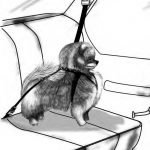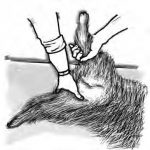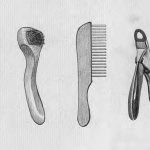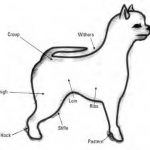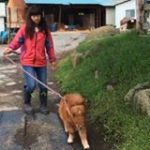Coming Home
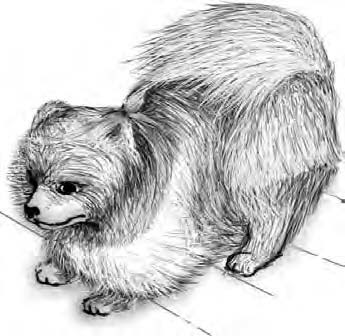
In This Chapter
- The first journey: Bringing your Pom home
- Connecting with the family
- Surviving the first night — you and your Pom!
Making that First Trip Safe and Sound
Scheduling the pickup time
Remember
Be sure to confirm your arrival time with the breeder so he doesn’t feed the puppy right beforehand. This timing should lessen the possibility of car sickness or nervous diarrhea. Yuck!
Tip
If you work during the week, arrange to get your new dog on a Friday or just before your vacation time. That way you can spend plenty of time with him and be able to nap when he naps. With any luck, you won’t feel like a walking zombie from sleep deprivation on Monday morning.
Preparing to drive Miss Daisy: What to bring
– Another adult: Even a good friend may not be so thrilled if you pack her in with the rest of the gear, so save the front seat for her. She can ride along with you and lend an extra pair of hands. You’ll be grateful for the help if the puppy starts fussing.
– Carrier: Just as a new baby doesn’t ride home from the hospital in your arms, neither should a new puppy — or even an older dog. Regardless of the length of the trip, bring a dog carrier with a towel in the bottom. Bring extra towels in case of accidents.
– Cleanup supplies: Some rinse-free shampoo and paper towels are also handy just in case he has an accident and gets it all over himself.
– Drinking water: Bring some bottled water or an empty bottle that you can fill with water from the breeder’s home. Changes in water can give some dogs upset stomachs. Why risk it in the car?
– Money: When you head to the breeder’s place, don’t forget your money! Unless the breeder has indicated a personal check is acceptable, bring cash or a cashier’s check.
– Toys: Be sure to bring something (a chew toy or even a stuffed animal for cuddling) to occupy him.
– Food: If the trip will last a couple of hours or longer, bring some of the same food he’s been eating. Hypoglycemia (low blood sugar) is a concern in these little ones (see Chapter Eating Out of the Pom of Your Hand for more on this), so don’t put off a meal too long just because you’re traveling. Ask the breeder ahead of time what your dog has been eating; either buy a small bag of it in advance or ask the breeder whether you can buy a few days’ supply from him.
Have your pup’s first meal waiting at your home. Even if you don’t have a long ride, chances are the breeder won’t feed her right before she leaves for your house.
Note: Even if you’ve selected the ultimate canine ambrosia, start by feeding the same food the breeder has been feeding her. She’s facing enough changes without having to cope with a new food that may upset her tummy — and your housetraining plans. If you plan to switch her to another food eventually, be sure to do it gradually. Abrupt changes in diet can lead to puppy diarrhea.
– Collar and leash: Bring a secure leash and collar just in case you have to take him out. You don’t want him bolting away, falling down a storm drain, hiding under a parked car, or doing any of the hundreds of dangerous tricks a loose puppy can do. But be forewarned; he probably doesn’t know how to walk on a leash. Don’t get your hopes up for much walking or relieving.
Tip
If you’ve planned an overnight trip to collect your Pom, read about traveling with a Pom in Chapter Traveling with a Pom Pilot (Or Leaving Him in Others’ Care). Bring a playpen or exercise pen and place plastic sheeting beneath it.
Remember
Your new pup may not look like the pup you chose a few weeks ago. If you’re concerned, say so. Good breeders would never switch puppies on you, so if you’ve chosen a trustworthy breeder (check out Chapter In Search of Your Soul Mate), you don’t have to worry about this scenario. Chances are, your puppy has just changed with age. However, if she no longer looks healthy, ask whether you can come back at a later date to get her. A good breeder doesn’t want you leaving with a sick puppy any more than you do.
When the dog flies homeTo collect your dog from the airport, give yourself plenty of time to locate him.
He probably messed his shipping crate, so be ready with extra towels and cleanup supplies. Also bring some scissors to cut the plastic cable ties that airlines often add for extra security. You can’t open the crate unless you can cut through those ties. (And try not to look dangerous while wielding your scissors or knife in the airport!) Technically, you’re supposed to keep your dog in the shipping kennel until you’re outside the terminal. Obviously, this doesn’t work with big dogs, so most airports allow you to take the dog out right away as long as you don’t abuse the privilege. In other words, keep him in your arms and on a leash until you get outside. If you find a grassy area, give him a chance to urinate. |
Managing a Happy Homecoming
Gaining a sense of place
– Calm the kids. If you have children, they’ll likely be excited to see the new puppy. But they have to be calm or else wait in another room.
– Secure other animals. Make sure all your other animals are put up.
– Take him to the grass. Introduce your Pom to the spot you’ve decided will be a good bathroom (read more about this in Chapter Saving the Carpets: Housetraining). He probably won’t use it because he has no idea what you want. But at least you’ve given him a chance.
– Show him the Pom-approved spaces. After he’s had a little time to check out the outside bathroom, take him inside and let him loose in the part of the house you’ve designated as Pom friendly (Chapter Prepare to Be Pomerized! has more details on this step).
- Start by introducing him to the places most important to him: his eating area and sleeping area. Put a bit of food in his bowl so he’ll get the idea.
- He may be glad to be out of his crate, so don’t expect him to go back in for a while. He’s also probably curious about this strange new world, if a little scared. But don’t overwhelm him with a tour of the whole house — even if you live in a one-room apartment. Leave something for later!
Tip
Always stay with him as he explores. He may never have been loose in a house before, so he’s a prime candidate for trouble. If he chews on an electric cord, give a harsh warning sound like Ahgt! and remove him from temptation.
Remember
Don’t be surprised if he has an accident inside almost right away. That’s why you want to take him back to the bathroom area several times while he’s looking around. Review your Pom’s gotta-go signs in Chapter Saving the Carpets: Housetraining, and be ready.
Meeting the family
– Patiently take turns holding the new dog. Avoid any fighting over the puppy or any rough handling. Small dogs are fragile, and even the best-intentioned children can end up causing injury.
– Use indoor voices and avoid being too loud around the dog. Screaming with excitement may put the dog on edge.
– Avoid chasing the puppy. It’s hard not to get carried away with a game of chase! But a fun game to the two-legged chasers may feel like a run-for-your-life situation to the chasee.
– Sit on the floor nearer the new dog’s level. The Pom can easily move from one seated person to the next without being dropped or tripping a child. Note: A puppy can trip a toddler, but the toddler’s still big enough to squish the puppy if he falls on her.
Tip
Everyone in the house needs to know how to hold a puppy (see Figure 6-1). Always pick the dog up with one hand cradled under her chest (never by her legs, nape of neck, or anywhere else). Then rest the dog against your chest and hold her securely underneath with your other hand.
Saying “Hello” to doggy or kitty
Meeting dog to dog
Tip
Either separate the dogs by a barrier or have them both on leashes. Some dogs use the barrier as an excuse to start fence fighting, which means acting ferocious as long as something’s between them. If this fighting starts, you can separate the two dogs, place them on leashes, and try again.
Keeping an eye on the dogs’ behaviors
Watch how the resident dog and your newcomer react to one another. A puppy will probably be curious but cautious. Some pups get excited, in which case you need to prevent her from jumping all over the resident dog or from starting a chase-me scene. An older new Pom may be laid back, frightened, or have a devil-may-care attitude — you never know.
– Your resident dog is sniffing, with ears relaxed or held slightly forward.
– Your resident dog is in a play bow position, with front legs on the floor and butt in the air (see Figure 6-2).
– You can distract your resident dog with a treat.
Warning!
Watch for these trouble signs. You may want to stay close or at least keep the resident dog on a leash:
– Your resident dog is walking stiff-legged.
– Your resident dog is staring intently at the Pom.
– Your resident dog jumps at the Pom without play bowing (see Figure 6-2).
– Your resident dog growls or snarls at the Pom.
Fostering a friendly canine relationship
– Your resident dog is the king or queen and should remain so. This fact means he gets fed before the new dog, gets loved before the new dog, goes through doors before the new dog, and basically gets treated like royalty in comparison. This show of favoritism is tough when you’re so enthralled with the new dog, but the perfect recipe for jealousy is to push the resident dog into the background while you gush over the newcomer.
Warning!
If an older dog has a hard time getting over this jealousy, she may lash out to put the usurper in her place. The reaction is the older dog’s misguided attempt to show you exactly who’s more deserving.
– There’s no need to lock the older dog away whenever the puppy comes out to play. However, allowing the puppy on your lap while you make the older dog stay on the floor isn’t a good idea.
Make the puppy’s presence a sign of good times to come. For example, when the puppy eats all those extra puppy meals, give your older dog a small treat too.
– Puppies often come with a get-out-of-trouble-free pass with older dogs. This apparent liberty means the pup can crawl on them, bite them, and do all sorts of tricks that an adult dog doesn’t allow another adult to do.
Your older dog’s tolerance doesn’t mean she likes that kind of play. Make sure your grown dog has an escape route (perhaps a high sofa she can get on or her own crate) so she can get away from the little pest. And be ready to put the pest up.
Tip
– Allow your adult dog to warn an irritating puppy. In other words, let her growl at times (like an older sibling tells a younger one to leave her alone!). If you don’t allow this response, the dog may tolerate the pesky pup too long and jump the pup — without warning! If your puppy doesn’t heed the warning, help him out by removing him and placing him back in his exercise pen.
– Keep your puppy from eating out of the other dog’s bowl, especially if the other dog is larger. Although you don’t want to encourage food-possessive behavior, it’s a natural reaction when dogs are around other dogs. Until your puppy understands proper etiquette, he needs your help to avoid dumb stunts.
Meeting the cat of the house
Warning!
If the dog starts to chase the cat (or vice versa), put an end to it immediately. If the dog gets too fresh with the cat, the cat’s likely to swipe her with his paw. Don’t punish the cat; just hope the dog is smart enough to need only one lesson.
– Make sure you don’t give your cat reason to be jealous of the new Pom.
– Heap on the attention and treats to your cat when the puppy’s around.
– Make sure the cat has abundant puppy-free zones in the house.
Settling In on the First Night
Starting a routine from the get-go
1. About 30 minutes before bedtime, feed your young puppy his last meal of the day.
Reduce this to a snack for older puppies.
2. About 20 minutes after your dog eats, take him out to the bathroom.
He must take care of his business before hitting the sack.
3. Take him to his sleeping quarters and settle him inside.
4. Go to bed.
At least, try to go to bed. If your Pom is experiencing some anxiety, read the next section for guidance on what to do next.
5. If he awakens in the middle of the night, carry him out to the potty place again.
This is not a time for playing. Give him a few minutes and return him to bed. Even better, set an alarm clock for the middle of the night so you, not the puppy, decide when he goes out. No fair hitting the snooze!
Calming those first-night jitters
Remember
Your Pom puppy is coping with a situation you can’t even imagine for a human baby — she’s suddenly removed from her family and home, the two elements that have made her feel secure her entire life. This situation is far less traumatic if the breeder separates the puppies for increasing lengths of time before they leave, but this preparation may not alleviate the sudden stress of a new home.
– Give your Pom a place he can call his own — a crate, bed, or special corner of the couch — to help him feel at home.
– A treat or chewie can help keep him in place and convince him this new place is pretty neat!
Tip
You may have been told to ignore your wailing puppy so you don’t spoil or reward her for crying. But what does that really teach her? Only that in the most frightening situation she’s ever encountered, nobody’s there to help her — no matter what she does. Her real mother would never treat her that way. Some dog behaviorists now believe this traditional advice may contribute to separation anxiety (see Chapter Dealing with Doggy Delinquents) in adulthood.
Warning!
What about your Pom sleeping on your bed? This isn’t a good idea, mostly because of safety concerns. Consider these possibilities:
– A Pomeranian puppy is so small you can roll onto him in your sleep.
– Even if you’re a light sleeper, he can still fall off the bed.
– The bed may be so large that he feels comfortable making one corner his personal bathroom — bad for your bed sheets, your sleep, and his housetraining.
by D.Caroline Coile,Ph.D.








